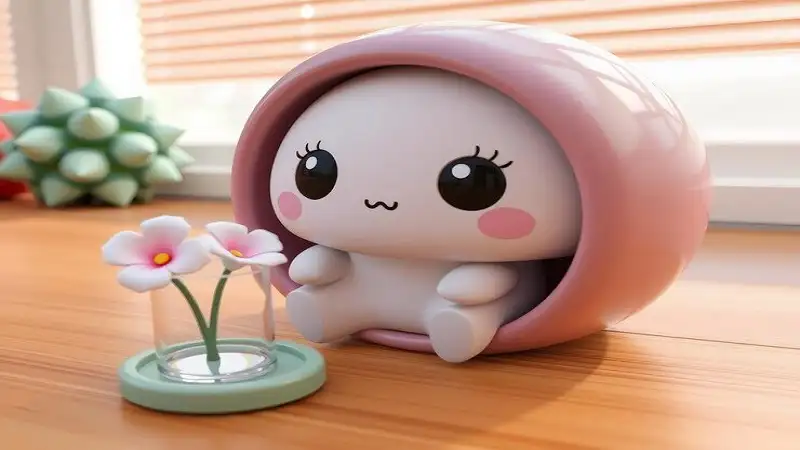Kawaii:_q3jl2sjivk= Cute is a Japanese term that translates to “cute” in English. It represents more than just an adjective; it embodies a cultural phenomenon that emphasizes charm, innocence, and endearing qualities in people, objects, and behaviors. Kawaii has become a significant part of Japanese culture and has grown to influence global trends in fashion, entertainment, and lifestyle.
The Origins of Kawaii Culture
The concept of Kawaii:_q3jl2sjivk= Cute has its roots in post-World War II Japan. It gained prominence in the 1970s and 1980s when youth culture began embracing cuteness as a way to express themselves. With the rise of cute characters like Hello Kitty and the playful aesthetics of Japanese comics (manga), kawaii evolved into a widespread cultural trend.
Why Kawaii Has Become So Popular
Kawaii:_q3jl2sjivk= Cute popularity can be attributed to its ability to evoke positive emotions and create a sense of comfort. Its visual elements are designed to be appealing and approachable, making people of all ages gravitate toward its simplicity and charm.
The Influence of Kawaii in Japanese Culture
Kawaii in Everyday Life in Japan
In Japan, kawaii is everywhere—from the designs on everyday products to the mascots representing businesses and cities. It’s integrated into everything from stationery and clothing to food packaging and advertisements, becoming a lifestyle rather than just a trend.
Kawaii in Japanese Language and Communication
The Kawaii:_q3jl2sjivk= Cute culture has also influenced the way people speak and express themselves in Japan. Phrases, tone, and even writing styles often take on a softer, more playful feel to align with the aesthetics of cuteness.
Traditional Kawaii Icons and Symbols
Traditional icons like Maneki Neko (the lucky cat) and popular characters such as Pikachu from Pokémon are integral parts of kawaii culture. These symbols represent luck, happiness, and childlike wonder, further embedding kawaii into the national psyche.
Global Expansion of Kawaii Culture
How Kawaii Spread to the West
Kawaii:_q3jl2sjivk= Cute culture began to spread globally in the late 1990s and early 2000s, primarily through anime, manga, and video games. Its unique style captured the attention of international audiences, leading to the incorporation of kawaii elements in Western fashion, art, and pop culture.
Influences in Fashion, Art, and Design
Kawaii:_q3jl2sjivk= Cute influence can now be seen in global fashion trends, with many designers embracing its pastel colors, playful prints, and childlike motifs. It has also inspired contemporary artists to blend traditional art with kawaii elements to create unique, whimsical pieces.
The Role of Social Media in Promoting Kawaii
Platforms like Instagram, Pinterest, and TikTok have played a crucial role in popularizing kawaii culture. Social media influencers and content creators showcase kawaii styles, crafts, and aesthetics to millions of followers, making it a mainstream trend worldwide.
Elements of Kawaii Style
Key Characteristics of Kawaii Aesthetic
The Kawaii: Cute aesthetic features bright colors, round shapes, and playful designs. Artists often depict characters and objects with large eyes, small noses, and exaggerated expressions to enhance their cute appearance.
Popular Kawaii Characters
Characters like Hello Kitty, Totoro, and Rilakkuma have become international icons of kawaii culture. They are celebrated for their simplicity and charm, making them beloved figures across different generations.
The Color Palette of Kawaii
Pastel colors like pink, baby blue, mint green, and lavender dominate the kawaii palette. These soft, light hues contribute to the gentle and friendly vibe that defines the aesthetic.
Kawaii Fashion Trends
Harajuku and Kawaii Street Fashion
The Harajuku district in Tokyo is synonymous with bold, expressive street fashion that often incorporates kawaii elements. From frilly dresses to oversized sweaters adorned with cute prints, Harajuku fashion is all about making a statement.
Cute Accessories and Makeup Styles
Accessories like hairpins, bags shaped like animals, and pastel-colored jewelry are essential to achieving the kawaii look. Makeup styles also focus on creating a youthful appearance with rosy cheeks, soft eyeshadow, and playful eyeliner designs.
Popular Kawaii Fashion Brands
Brands like Sanrio, Liz Lisa, and Baby, The Stars Shine Bright have established themselves as leaders in kawaii fashion. Their designs often feature a mix of Victorian elegance with modern cute aesthetics.
Conclusion
Kawaii:_q3jl2sjivk= Cute is more than just a trend—it’s a cultural movement that has taken the world by storm. Its influence on fashion, art, consumer products, and everyday life is undeniable. As kawaii continues to evolve and adapt, it remains a testament to the power of cuteness in bringing joy and creativity into people’s lives.Read More infotimedod.
